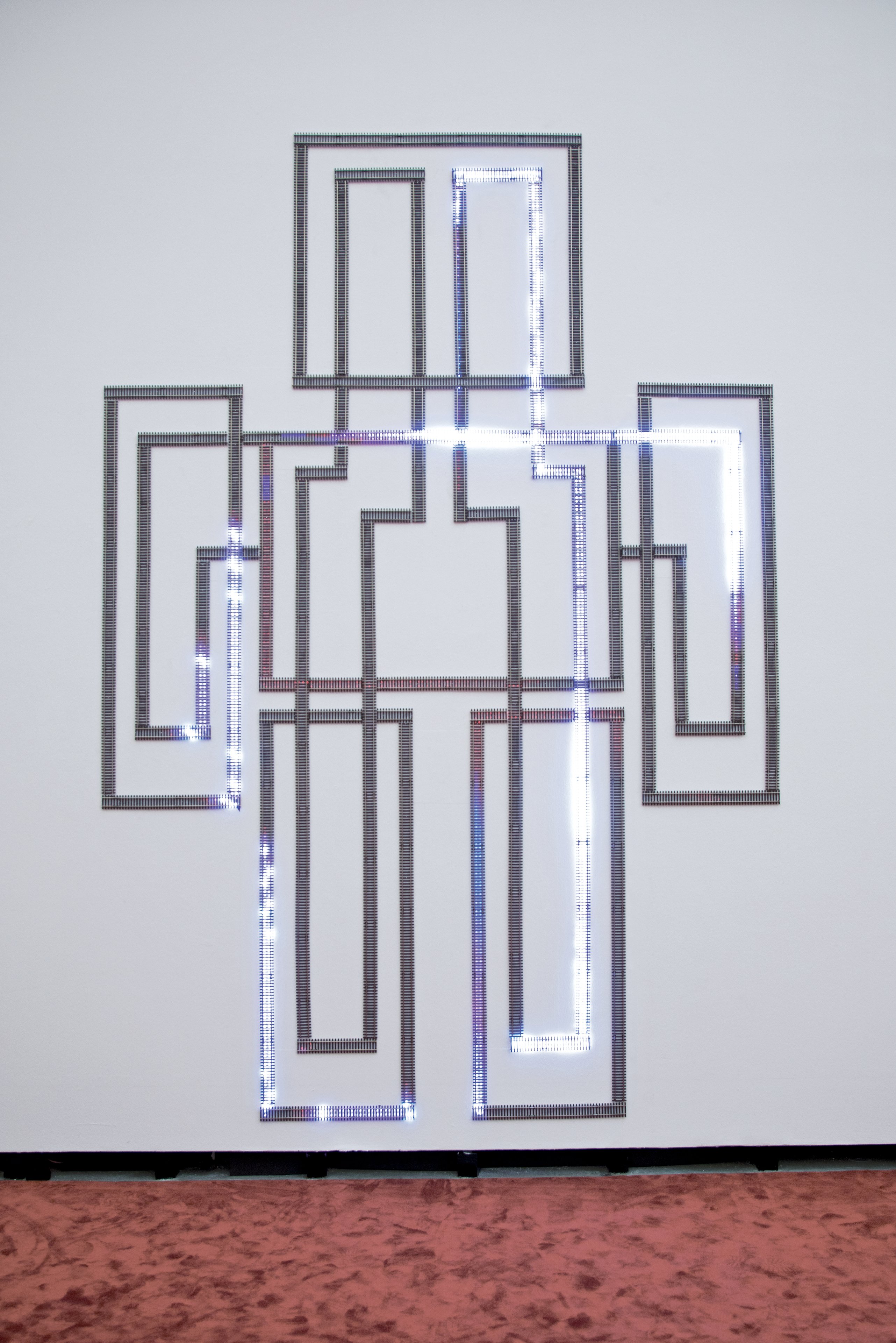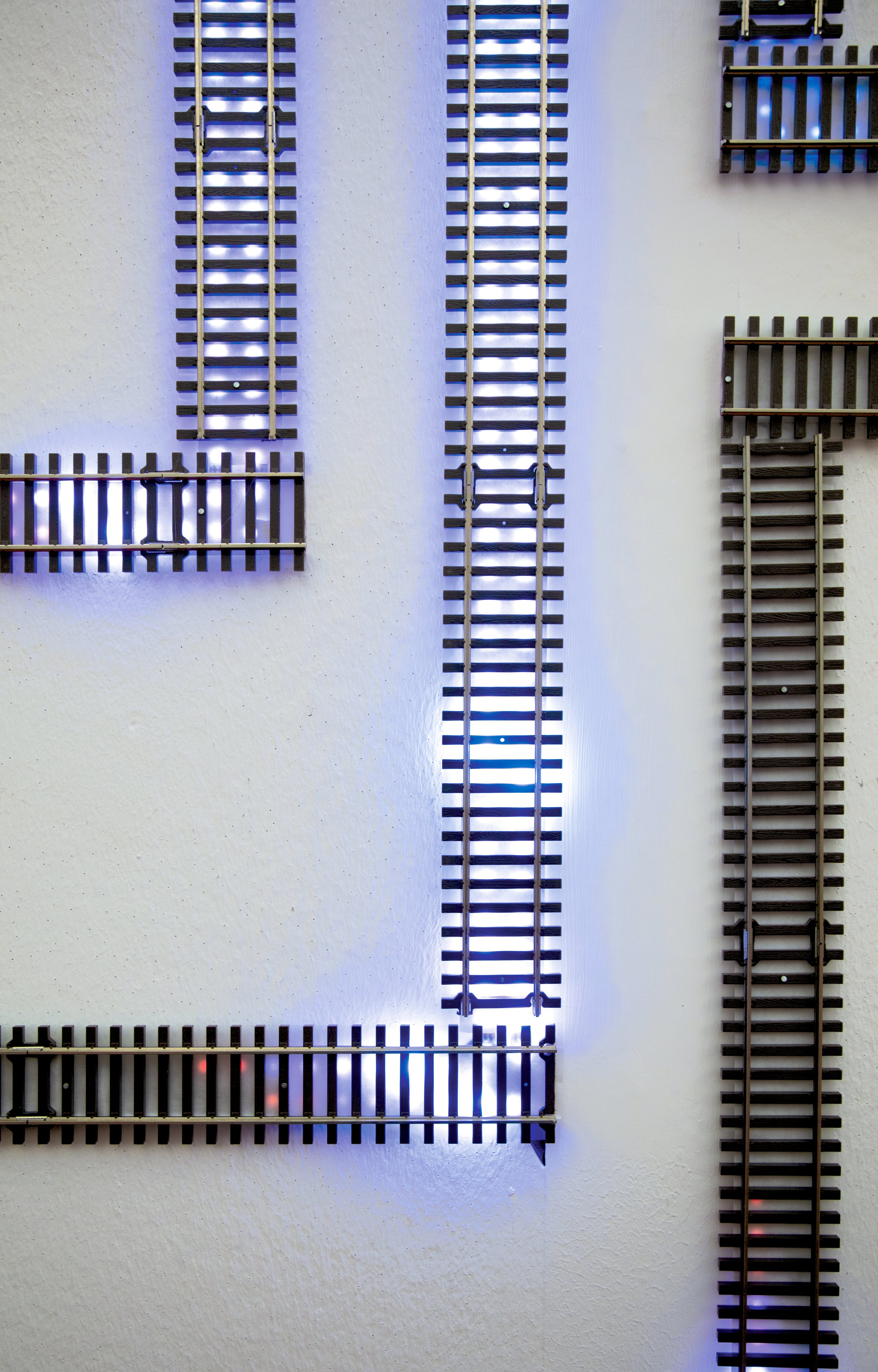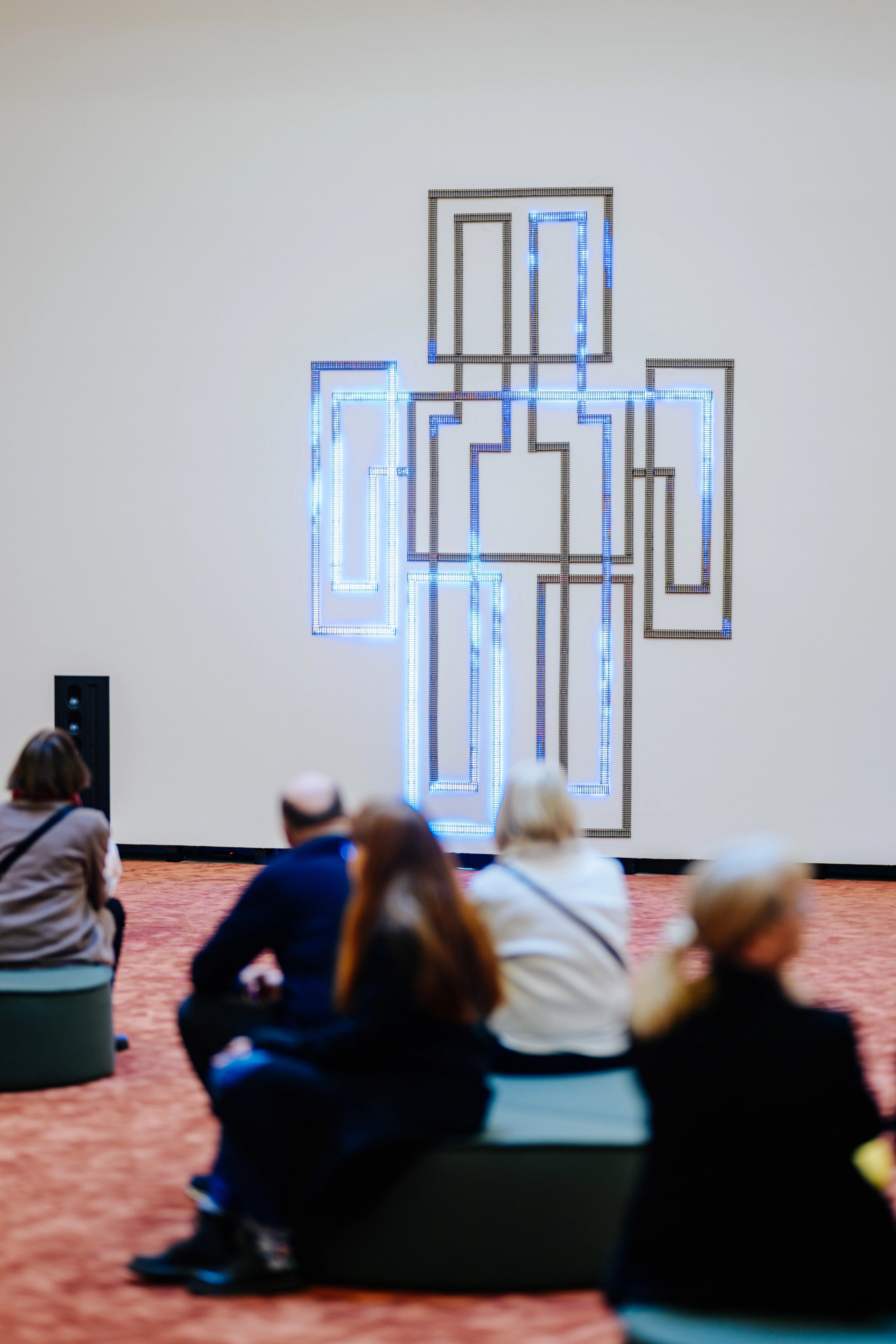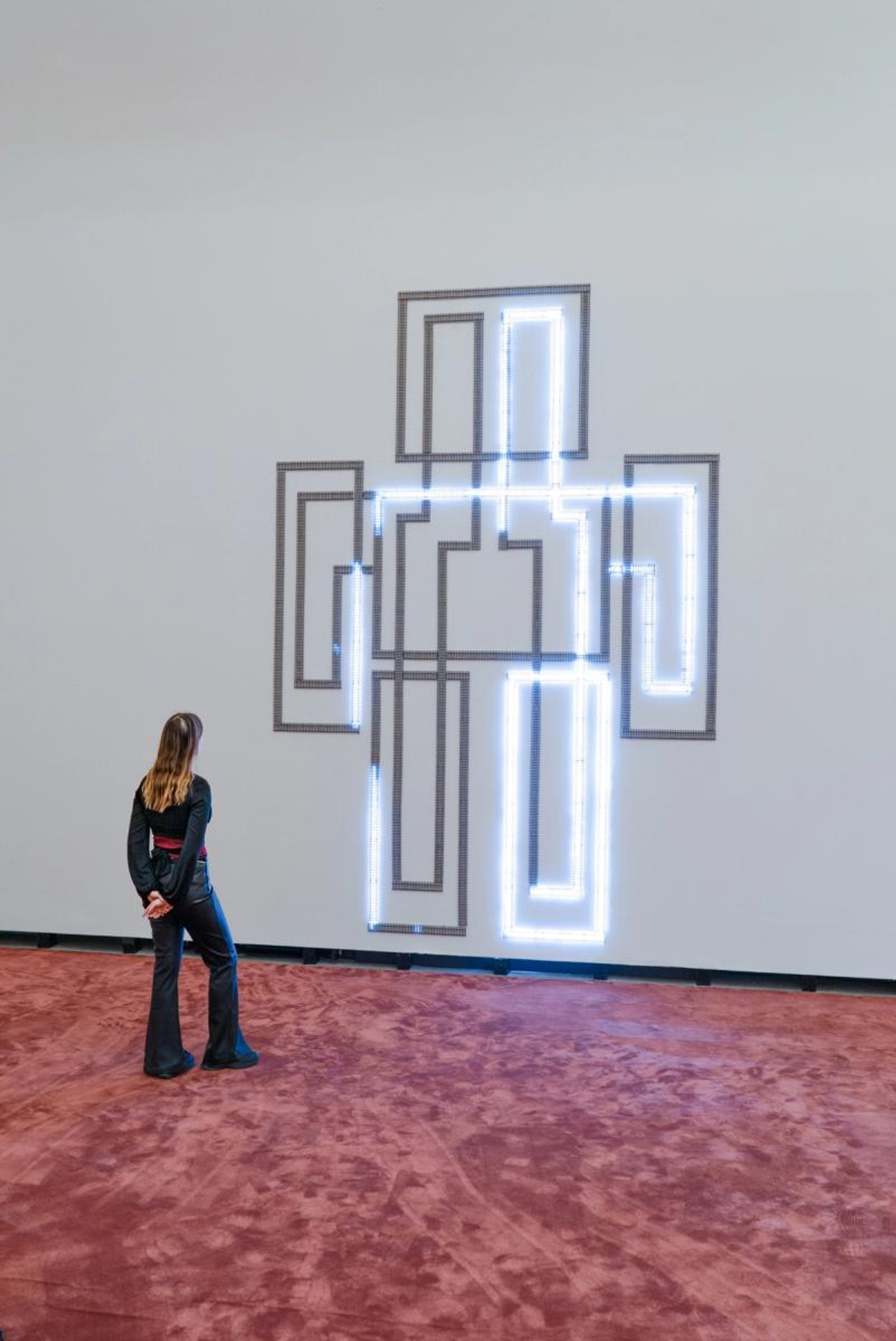




Door of Breath II is an anthropomorphic arrangement of model railway tracks extending over a sound-responsive LED system. Illustrating the intricacies of the central nervous system, the transmission of innumerable signals between every part of the body is rendered visible.
A human body was unravelled in 1888, five months of dissection revealing the cerebrospinal nervous system in its isolated entirety for the first time. Each filament glazed in protective lead paint and affixed to an educator’s slate with thousands of pins, a delicate arrangement making tangible the complex system by which innumerable signals are transmitted between every part of the body. That same year, an internal combustion engine for railway use was first prototyped; we are made of signals and we have built a world in our image. Door of Breath shows a simplified representation of the meridian system as described by traditional Chinese medicine. Meridians are energy conduits of the human body through which organs, tissue and all substances are linked. As in other works, Silverman uses model railway as the energetic connection points between stations much like the meridians enable the flow of “qi”, a vital energy that is held to animate the body.
In this site-specific work developed for the exhibition, Silverman uses the curved walls and surfaces of the Frank Gehry–designed building to compose a sine wave score arranged over 13 surround sound speakers. The audio piece, “Panic Architecture (Higher than delight, deeper than sorrow)” travels through the cathedral-like exhibition space, illuminating the human form through a representation of the delicate interplay of stimuli and responses that flow through all of us internally.





Door of Breath II is an anthropomorphic arrangement of model railway tracks extending over a sound-responsive LED system. Illustrating the intricacies of the central nervous system, the transmission of innumerable signals between every part of the body is rendered visible.
A human body was unravelled in 1888, five months of dissection revealing the cerebrospinal nervous system in its isolated entirety for the first time. Each filament glazed in protective lead paint and affixed to an educator’s slate with thousands of pins, a delicate arrangement making tangible the complex system by which innumerable signals are transmitted between every part of the body. That same year, an internal combustion engine for railway use was first prototyped; we are made of signals and we have built a world in our image. Door of Breath shows a simplified representation of the meridian system as described by traditional Chinese medicine. Meridians are energy conduits of the human body through which organs, tissue and all substances are linked. As in other works, Silverman uses model railway as the energetic connection points between stations much like the meridians enable the flow of “qi”, a vital energy that is held to animate the body.
In this site-specific work developed for the exhibition, Silverman uses the curved walls and surfaces of the Frank Gehry–designed building to compose a sine wave score arranged over 13 surround sound speakers. The audio piece, “Panic Architecture (Higher than delight, deeper than sorrow)” travels through the cathedral-like exhibition space, illuminating the human form through a representation of the delicate interplay of stimuli and responses that flow through all of us internally.




